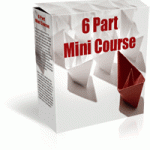Hull Design – Basic Rules to Follow
When you look at a boat, you have to remember that the hull is one of the most important parts . If you have a poor design the boat will not be stable, will not float or could lean to one side.
The boat hull acts as a balancer for your boat so there are a few rules to make sure you follow when designing and creating one.
Strength:
Hulls should be simple yet very strong.
If you are inexperienced it would be better to design and build a hull that is simple, however you still have to be mindful of both the strength and weight.
The design should have the center of buoyancy fixed some where about halfway between the stern and bows. John Teale a well known author various boating books, had said “Whatever you do with the hull, make sure that it keeps the buoyant center at the right point. This will ensure that your boat doesn’t topple over or get un-balanced easily by waves.”
Curving:
When you are designing the wall sided type of boat, always make sure that the degree of curving that you are incorporating at the sides of the boat is equal to the curvature of the base of the boat. This way, the pressure of water will be equal on all parts of the boat. This essentially means that your boat will be streamlined and perfect for smooth, jerk reduced movement.
Building boat hulls is not a big headache but these basic points have to be kept in mind if you want a perfect streamlined hull. Say you are designing a ballasted boat; make sure that the weight of the boat (the up-weight) is always forty to fifty percent greater than the weight of the ballast.
The best would be if you could design boat hulls that will hold the ballast below the waterline at all times. So, boat hulls being the most important part of a boat, require the greatest attention and therefore pay heed to what type of hull you are building if you want a good boat.
|
Boat Design 6 Part Mini CourseLearn how to design and build a boat like a pro |

